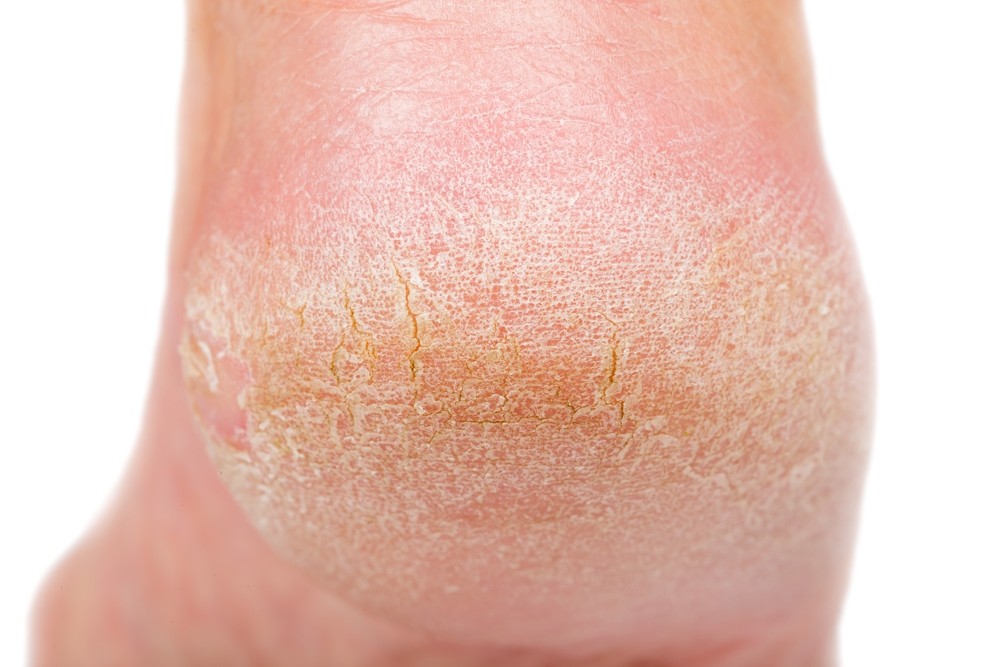
Normal skin has a soft, supple texture because of its water content. For skin to feel soft, pliable and “normal,” its top layer must contain a minimum of 10% water — and ideally between 20% and 35%.
To help protect the outer layer of skin from losing water, the skin’s sebaceous glands produce an oily substance called sebum. Sebum is a complex mixture of fatty acids, sugars, waxes and other natural chemicals that form a protective barrier against water evaporation.
If the skin doesn’t have enough sebum, it loses water and feels dry. If environmental factors cause more water evaporation and overwhelm the ability of sebum to prevent water loss, the skin will shrivel and crack.
Causes include:
- Cold seasons – Dry air is probably the most common cause of dry skin, especially during the winter. It draws the moisture right out of the skin.
- Inappropriate footwear – exposing the skin to the environment
- Long hot showers – Prolonged exposure to water – especially hot water – can wash away the natural oils that protect your skin. If you get out of the bath or shower and your skin feels tight, it’s dried out.
- Soaps and harsh cleansers – Soap can quickly strip away your skin’s protective oils, and we tend to use way too much of it.
- Artificial heating and cooling – this can draw humidity levels down into the single digits making skin dry
- Some medical conditions such as hypothyroidism, diabetes and malnutrition
- Skin conditions such as psoriasis, dermatitis, eczema
- Ageing and Menopause
- Medications
- Genetics – Researchers now say that dry skin can be inherited.
Treatments include
- Scrubbing and filing away dead skin
- Moisturiser – 20-20% urea content creams. Put on moisturiser when your skin is still damp. That way, the moisturiser is trapping the moisture still on your skin.
- Moisturising soaps – using an unscented soap that either has a high fat content or contains glycerin.
- Stay hydrated
- Protecting feet from harsh environments
- Treating any underlying conditions
- Hair, skin and nail supplements
- Well balanced diet
- Socks strapping and padding
- Podiatry treatment


